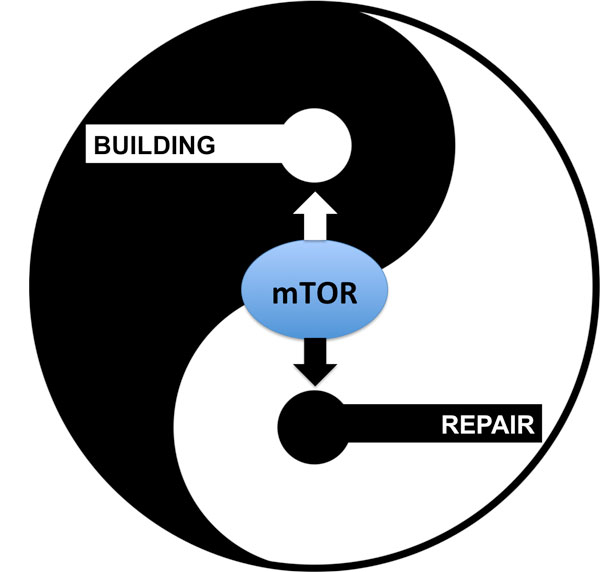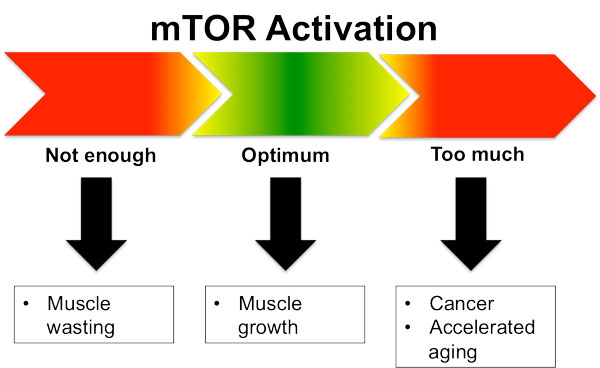- My Forums
- Tiger Rant
- LSU Recruiting
- SEC Rant
- Saints Talk
- Pelicans Talk
- More Sports Board
- Fantasy Sports
- Golf Board
- Soccer Board
- O-T Lounge
- Tech Board
- Home/Garden Board
- Outdoor Board
- Health/Fitness Board
- Movie/TV Board
- Book Board
- Music Board
- Political Talk
- Money Talk
- Fark Board
- Gaming Board
- Travel Board
- Food/Drink Board
- Ticket Exchange
- TD Help Board
Customize My Forums- View All Forums
- Show Left Links
- Topic Sort Options
- Trending Topics
- Recent Topics
- Active Topics
Started By
Message
re: Is there already a cure for cancer?
Posted on 12/30/16 at 4:28 pm to BR Tiger
Posted on 12/30/16 at 4:28 pm to BR Tiger
quote:
National Cancer Institute, a government health research entity. They are not concerned about the profit margin.
In a way, they should be. Same goes for the NIH. For example:
group at a university gets a grant from NIH / NCI to study cells from patients. They will need lab stuff like glassware, assay kits and so forth. They will also need a way to store the tissue samples - probably one of those -80 units or something like that.
Let's say they look at cells reacting to medication. They go about the research, grant ends, they publish, move on to next grant. Here's where we move to a problem: in the vast majority of specimen studies, less than half of a specimen is ever used. So what happens to it? Usually they are thrown out or the next project doesn't call for use of specimens so the freezer is unplugged and moved to storage and samples spoil.
A year later there is a major advancement in the assay field that gives greater insight to a vexing issue. Can they simply repeat the prior lab work with this new assay and refine prior results and conclusions? Nope. Tissue is gone. So an entirely new endeavor must be undertaken and the conclusions will be shakier because it's new specimens from different people and so forth.
This brings about a huge waste of time, waste of money, and waste of effort, as well as less precision and less clarity than would otherwise be the case if tissue was preserved.
Researchers, universities, NIH, NCI, and others don't police this with any type of forethought at all. And even though they know this is a problem there is no large effort to deal with it. Even recent efforts to form tissue repositories do very little here. I read an article from 2012 or so and it was estimated that over $50 million per year is lost for this type of failure. Who knows how much time this is costing us and for cancer patients time is the biggest commodity there is.
Many reasons why this has become a problem. The main crime is that it's been recognized but is not being fixed.
We need a rigorous approach to fixing these issues with ambitious plans and goals that attach to an entire field of research. For instance, if a cure is found for something, grant everyone working in that field of research immediate retirement at 50% of their current pay. Can you imagine the quality of work that would ensue if everyone focused on, say, lung cancer, knew that could be their future? Get PhD start work at 30, you could realistically retire before 50 and move on to something new for a second career.
Posted on 12/30/16 at 4:36 pm to UF
All of this sounds like it makes entirely too much sense to ever happen.
Posted on 12/30/16 at 4:42 pm to High C
According to a bunch of women on Facebook, there is. It's doterra essential oils and they'd be more than happy to not only sell you some, but also set you up to be financially independent.
Posted on 12/30/16 at 9:24 pm to High C
If a magical cure were to become reality, the following things would need to be considered:
The abrupt curing of cancer (and subsequent expansion of the geriatric population) could potentially collapse society...
The key is extension of productive life/healthspan.
If all we can bring to the table is extension of life without preservation of vitality, there will be too large of population skew = societal collapse
A few dominos have to fall before we "see" a cure for cancer. Namely:
-stable political / economic climate
-reliable age extension/ vitality preservation (see links below for folks working to do this)
Bioviva
LINK
The abrupt curing of cancer (and subsequent expansion of the geriatric population) could potentially collapse society...
The key is extension of productive life/healthspan.
If all we can bring to the table is extension of life without preservation of vitality, there will be too large of population skew = societal collapse
A few dominos have to fall before we "see" a cure for cancer. Namely:
-stable political / economic climate
-reliable age extension/ vitality preservation (see links below for folks working to do this)
Bioviva
quote:
We are gene therapy innovation leaders. We develop therapies to treat severe genetic disorders and cellular aging. We are working on several patents and are seeking strategic partnerships to help us make a positive step forward in our efforts to bring cures to aging populations and those who suffer monogenic disease. At the heart of Bioviva's product creation efforts is its broadly applicable gene therapy platform for the development of novel one time treatments for diseases with either ineffective or no clinical options.
LINK
quote:
Dr. Valter Longo, a professor of gerontology and biological sciences and director of the longevity institute at the University of Southern California.
Dr. Longo has made huge contributions to the field of aging, including the role of fasting and diet in longevity and healthspan in humans as well as metabolic fasting therapies for the treatment of human diseases. In this conversation, Rhonda and Valter discuss...
• The effects of prolonged fasting, which refers to 2-3 day fasting intervals in mice and 4-5 days in humans.
• Dr. Longo’s work on the fasting-mimicking diet, which is 5 day restricted diet that is meant to simulate some of the biological effects of prolonged fasting while still allowing some food.
• How clinical trials have demonstrated efficacy for this diet for type 2 diabetes, multiple sclerosis, and cancer patients.
• Fasting as an inducer of differential stress resistance, where it can simultaneously make cancer cells more sensitive to death while also making healthy cells more resistant to these same death stimuli (such as chemotherapy) which might otherwise induce cell death amongst healthy cells as collateral damage.
• Fasting as a biological state which humans historically experienced with extreme regularity and we may ultimately need in order to mitigate various disease states.
• The effects of prolonged fasting on the immune system, namely, how it clears away damaged white blood cells via autophagy and how this causes hematopoietic stem cells to self renew and make more stem cells and also produce new blood cells to fully replenish the white blood cell population.
• How prolonged fasting causes a shift in the immune cell population towards one that is more representative of youth by normalizing the ratio of myeloid cells to lymphoid cells.
• The positive effects of prolonged fasting and the fasting-mimicking diet on markers of systemic inflammation, blood glucose levels and other aging biomarkers.
• The conclusions of Dr. Longo & Dr. Marcus Bock’s research comparing 1 week of the fasting-mimicking diet followed by 6 months of mediterranean diet to six months of a ketogenic diet in people with multiple sclerosis.
• The strange, somewhat paradoxical role of autophagy genes in cancer progression and some of the open questions surrounding the exact role that these genes are playing.
• Dr. Longo’s high level thoughts on metformin as an anti-aging drug.
• How the growth hormone/IGF-1 axis is one of the most important genetic pathways in aging from yeast to worms to mice to humans.
This post was edited on 12/30/16 at 9:43 pm
Posted on 12/30/16 at 9:41 pm to High C
My 2cents on cancer/health and how they are intertwined...
You are not a slave to your genetics. The environment that you expose yourself to dictates the expression of those genes...

non-pdf version
See link below with mTOR (IGF-1 pathway)
LINK
LINK


Ever wonder why obese people look older than their stated age...
mTOR is always {ON} in our ever sicker/obese population of folks eating multiple small meals of mainly carbohydrate/sugar centric fare )
"Different/radical" concepts (rethinking what we know about cancer...)
LINK
see the links at the bottom of the piece linked above (and listed below)
LINK
New York Times Article
You are not a slave to your genetics. The environment that you expose yourself to dictates the expression of those genes...

quote:
9 Steps To Perfect Health
non-pdf version
quote:
Despite these considerable advances, we’re sicker and fatter than ever before. Consider the following:
• Excess weight now accounts for one in three deaths among middle aged people in the US each year.
• A billion people around the world suffer from diabetes and obesity.
• 600 thousand people die of heart attacks in the US each year.
• One-third of Americans suffer from high blood pressure, which contributes to almost 800 thousand strokes every year.
• 50 million people in the US—one in six Americans—suffer from autoimmune diseases like Hashimoto’s, rheumatoid arthritis, multiple sclerosis, and Crohn’s disease.
• Depression is now the leading cause of disability, affecting more than 120 million people worldwide.
Unfortunately, there’s every indication that things are going to get worse before they get better. This is the first generation of American children that are expected to live shorter lifespans than their parents. If current trends continue, 95 percent of Americans are expected to be overweight or obese within two decades, and one in three will suffer from diabetes.
See link below with mTOR (IGF-1 pathway)
quote:
Finding a Balance Between Building and Repair: Part 1
LINK
quote:
Finding a Balance Between Building and Repair: Part 2 Intermittent Fasting
LINK


Ever wonder why obese people look older than their stated age...
quote:
Building (growth) is an anabolic process that happens when mTOR is turned on. Stimuli such as resistance training and eating protein (especially the branched-chain amino acid leucine) turn the mTOR switch on. The hormone insulin also turns on the mTOR building pathway. This effect of insulin should come as no surprise to readers of Strong Medicine (SM pages 107-108) as we discussed insulin as a hormone of growth and storage.
As Dan Cenidoza covered in his Strength after Sixty post, the anabolic pathways of building are crucial to grow and maintain muscle mass especially as we age. Not enough of “turning on” the mTOR switch can lead to sarcopenia and frailty in old age.
At the extreme end of the mTOR building pathway is cancer. By the simplest definition, cancer is uncontrolled cell growth. Recent science has shown that many cancer cells have abnormally high mTOR signaling, putting them is a perpetual state of growth. People with insulin resistance (SM p. 180) have higher levels of insulin in their bloodstream at all times which keeps the mTOR switch activated. Thus, it is no surprise that those with insulin resistance/diabetes are known to have increase risk of cancer.
We also now know that high levels of sustained mTOR activation can lead to accelerating aging in many species, including humans. With this information in mind, it becomes evident that getting the proper “dose” of mTOR activation is key.
We need enough “turning on” the mTOR building (growth) switch to prevent the loss of muscle mass so crucial for healthy aging, but no so much that we accelerate the aging process and become at increased risk for diseases such as cancer.
mTOR is always {ON} in our ever sicker/obese population of folks eating multiple small meals of mainly carbohydrate/sugar centric fare )
"Different/radical" concepts (rethinking what we know about cancer...)
quote:
Potential Tactics for Defeating Cancer — A Toolkit in 1,000 Words
LINK
see the links at the bottom of the piece linked above (and listed below)
quote:
There is a deluge of writing about cancer.
Below, I’ve suggested a top-10 list of articles as starting points. Some are for lay audiences, some are technical, but all are worth the time to read. Here you go:
Looking for articles to pass to your parents, or to read as a lay person? Read these, in this order:
1. Non-technical talk by Craig Thompson, Pres/CEO of Sloan-Kettering
2. Science piece written about cancer (for non-technical audience) by Gary Taubes
Have a little background and want the 80/20 analysis, the greatest bang for the buck? Read this:
3. Relatively non-technical review article on the Warburg Effect written by Vander Heiden, Thompson, and Cantley
Peaking on modafinil during a flight to Tokyo? Want to deep dive for a few hours? Here are three recommendations, in this order:
4. Detailed review article by Tom Seyfried
5. Review article on the role of carb restriction in the treatment and prevention of cancer
6. Talk given by author of above paper for those who prefer video
Want four bonus reads, all very good? As you wish:
7. Moderately technical review article by Shaw and Cantley
8. Clinical paper on the role of metformin in breast cancer by Ana Gonzalez-Angulo
9. Mouse study by Dom D’Agostino’s group examining role of ketogenic diet and hyperbaric oxygen on a very aggressive tumor model
10. Mechanistic study by Feinman and Fine assessing means by which acetoacetate (a ketone body) suppresses tumor growth in human cancer cell lines
LINK
New York Times Article
quote:
An Old Idea, Revived:
Starve Cancer to Death
In the early 20th century, the German biochemist Otto Warburg
believed that tumors could be treated by disrupting their source
of energy. His idea was dismissed for decades — until now.
BY SAM APPLEMAY 12, 2016
This post was edited on 12/30/16 at 9:53 pm
Posted on 12/30/16 at 9:43 pm to High C
quote:
Is there already a cure for cancer?

Posted on 12/30/16 at 9:53 pm to CrimsonTideMD
quote:Posts like this make me long for the day when I can down vote multiple times.
The best hope the rest of y'all have is to raise your overall body pH. The higher the better
Posted on 12/30/16 at 9:56 pm to jacquespene8
And Bill Gates' mother died of cancer along with many relatives of presidents.
There's no cure besides what we know about.
There's no cure besides what we know about.
Popular
Back to top

 1
1






